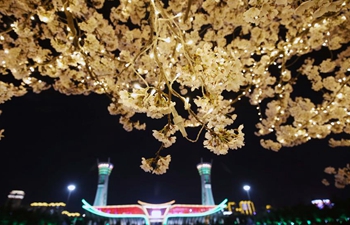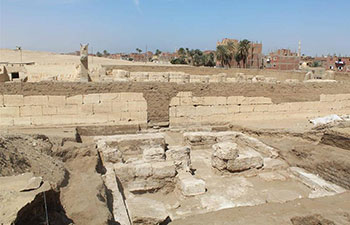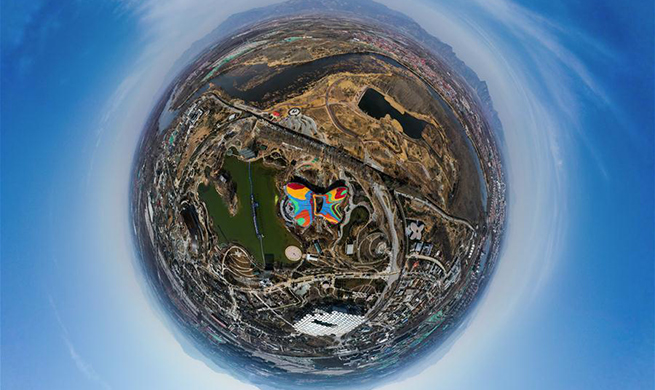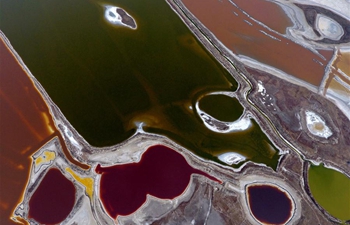GAZA, March 29 (Xinhua) -- Palestinians in the Gaza Strip are preparing for a massive rally on Saturday to mark the first anniversary of the popular protests known as the Great March of Return along the border fence between Gaza and Israel.
Palestinian observers believed the protests achieved success as they breathed life into the Palestinian cause and raised the awareness of the blockade on Gaza since 2007.
However, they highlighted the high cost of such success as hundreds have been killed during the rallies, while no serious breakthrough has been made in lifting the Israeli blockade.
According to the Health Ministry in Gaza, 266 Palestinians, including 50 children, six women and an elderly man, as well as three paramedics and two journalists, have been killed since March 30, 2018.
The ministry said 30,398 were injured, with 536 in critical condition.
Meanwhile, 1,963 burning balloons were released into Israel, which burned more than 3,200 hectares of crops, according to Israeli statistics.
In addition, Gaza militant groups fired 1,233 rockets into Israel and planted 600 explosive devices near the border fence.
Earlier in March, the UN Human Rights Council condemned Israel's "apparent intentional use of unlawful lethal and other excessive force" against Palestinian protesters in Gaza, calling for bringing perpetrators of violations to justice.
The condemnation came following a UN Independent Commission of Inquiry on the protests in Gaza, urging Israel to immediately ensure that its security forces' rules of engagement are revised to comply with the international legal standards.
Starting on March 30, 2018, the Palestinian Great March of Return demands Palestinian refugees' rights of return to their homes and the lift of the Israeli blockade on Gaza.
The protests turned violent on many occasions and peaked every Friday.
Hamza Abu Shanab, a Gaza-based political observer, said the marches succeeded in raising the Palestinian issue again in international forums as well as finding solutions to the blockade.
The protests also prompted mediation by Egypt and the United Nations for a cease-fire between the Palestinian factions and Israel.
Since last October, the Gaza Strip has witnessed relaxations in Israeli blocade, with electricity supplies notably improved and expanded fishing area and crossing points.
Israel also allowed the entry of a monthly humanitarian grant of 150 million U.S. dollars from Qatar into Gaza.
However, officials of the Palestinian factions, especially Hamas, continued to complain about Israel's procrastination in implementing other understandings of the cease-fire.
Consequently, repeated tensions led to rounds of military confrontations between the Palestinian factions and Israel.
Khaled Safi, a professor and political analyst from Gaza, said the marches constituted a popular clash with Israel that aims at breaking the siege and strengthening the steadfastness of Gazans.
However, Safi highlighted the negative aspects of the marches, including large human losses and the absence of the participation of all components of the Palestinian society.
The reality of the internal Palestinian division between Fatah party of President Mahmoud Abbas and Hamas has exerted a negative impact on the protests, amid the absence of "a unified strategic vision," he noted.
"The March of Return should not be controlled by a certain party to use them for partisan purposes," Safi said, referring to Hamas, which rules the Gaza Strip.

















